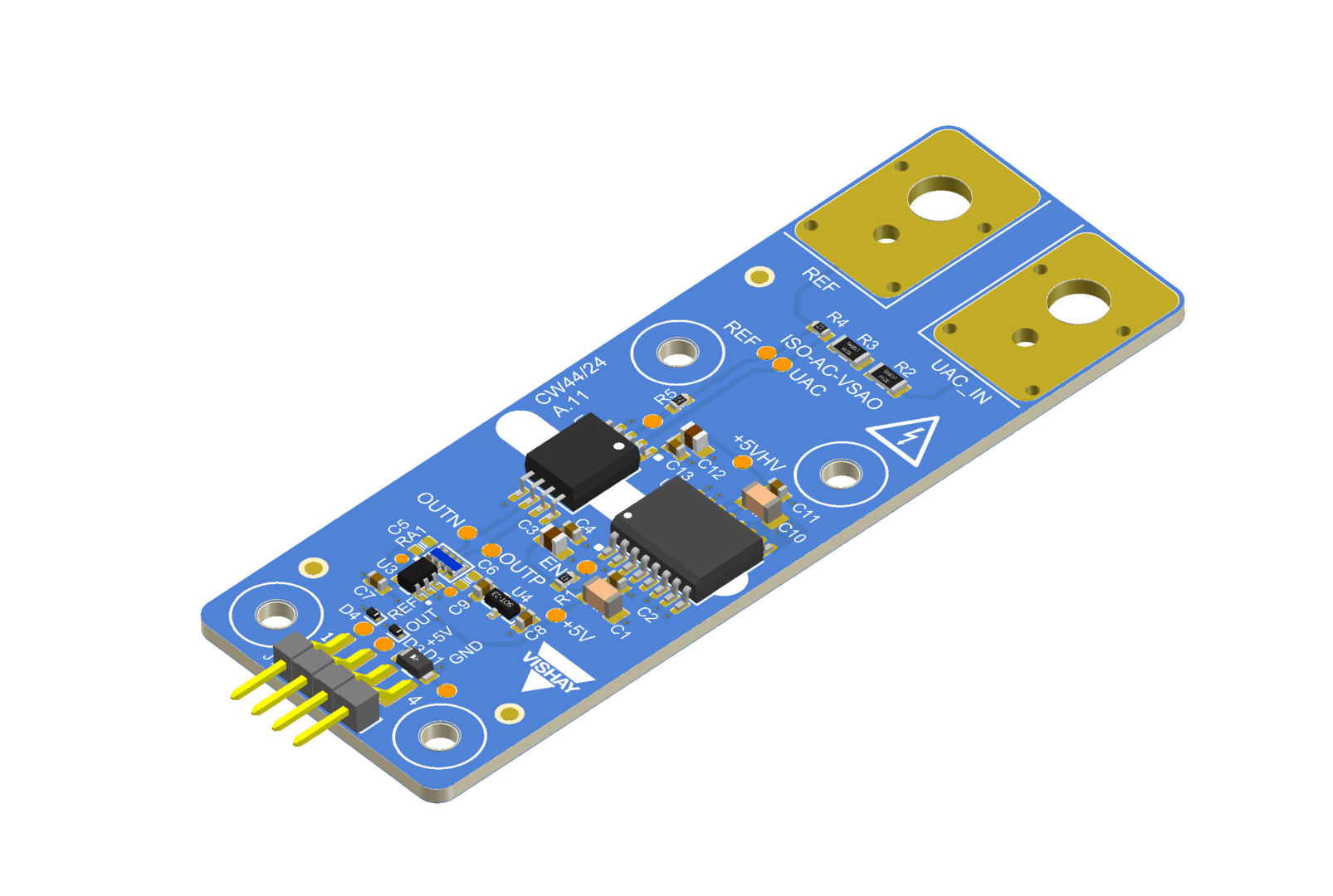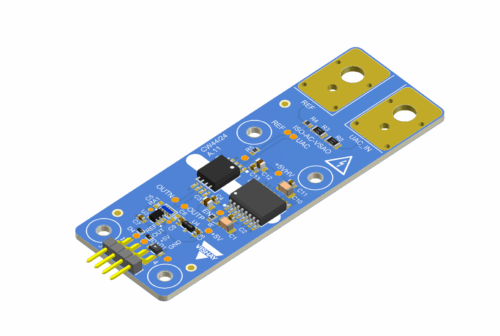
The voltage sensor reference design measures high AC voltages. It gives output in two forms, works with different devices, and helps engineers test and build faster.

The ISO-AC-VSAO, a reference design from Vishay Intertechnology, focuses on accurate voltage sensing for high-voltage AC systems. It uses the VIA0250DD isolation amplifier paired with a voltage divider made of TNPV precision resistors. The circuit scales down high AC voltages, typically up to 400 VRMS, and safely isolates the sensed signal before converting it to an analog output. Two output types are available: a differential output and a single-ended output, allowing flexibility in how the data is read and processed.
The VIA0250DD supports a ±250 mV differential input range and produces an isolated differential signal with a 1.44 V common-mode voltage. This can be directly connected to a differential ADC or used for prototyping. The single-ended output, ranging from 0 V to 2.5 V, is suitable for connection to a single-ended ADC or a standard multimeter. The amplifier uses capacitive isolation, offering a maximum working isolation voltage of 1200 VRMS, essential for safe and accurate high-voltage measurement.
The TNPV e3 resistors in the voltage divider are thin-film, flat chip resistors designed for high reliability and voltage stability. Also included are ACAS 0606 AT and ACAS 0612 AT resistor arrays. These are automotive-grade, thin-film resistor networks with convex terminations, offering options with equal or different resistance values. Their design ensures tight tolerance matching and temperature tracking, essential for maintaining a stable resistor ratio over time.
These features make the design highly suitable for applications where electrical isolation and measurement accuracy are critical. The use of capacitive isolation allows fast, accurate signal transmission without interference. With a 300 kHz bandwidth, the amplifier is capable of capturing high-frequency signal components, making it useful for rapidly changing AC waveforms. The system’s low temperature drift and offset further enhance measurement consistency, even in variable environmental conditions.
Design engineers can use this reference design as a ready-to-use building block for high-voltage measurement systems. It enables quick prototyping of isolated voltage sensing circuits, direct evaluation of high-voltage AC signals, and easy integration into ADC front ends for control or monitoring. Engineers can connect the output directly to development platforms or test equipment to validate system behavior, measure signal performance, or develop new monitoring solutions for industrial and automotive use cases. It also helps them validate their own resistor divider configurations or isolation amplifier choices before finalizing their system design.
The modular output configuration—both differential and single-ended—gives engineers the flexibility to connect the sensor to various types of data acquisition systems without needing external conversion or signal conditioning. The use of resistor arrays and precision resistors also simplifies layout in compact PCBs, improving performance and saving board space.
Vishay has tested this reference design. It comes with a bill of materials (BOM), schematics, assembly drawing, printed circuit board (PCB) layout, and more. The company’s website has additional data about the reference design. To read more about this reference design, click here.









